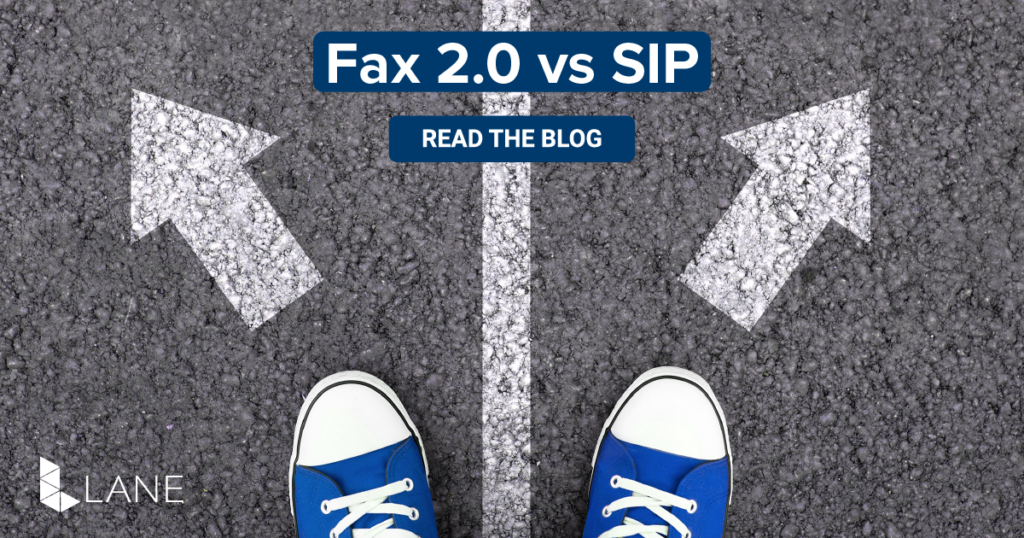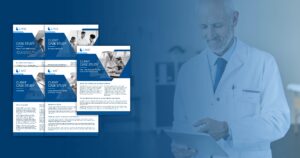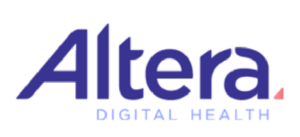SIP has been a common choice for business communication for some time now. It is used in internet-powered phone technologies, and has many advantages over traditional faxing. However, SIP also comes with its fair share of drawbacks. This is why Lane offers Fax 2.0, so businesses can overcome these disadvantages. Now, businesses can drive better outcomes with an even more efficient and interoperable communication infrastructure. In this blog post, we will give a brief overview of SIP, and compare its effectiveness with Lane’s Fax 2.0.
What is SIP & Why Is It Used in Business Communications?
SIP (Session Initiation Protocol) is a signaling protocol that supports voice, video, and other communication mediums such as fax. Enabling streamlined communication across the globe, SIP can be used with any networking device. Many businesses rely on SIP because it\’s required for their telephone system, and its advanced features allow for the integration of telephone and messaging into other software. To exemplify, SIP can integrate with a wide range of telephony systems, such as PBX like Cisco and Avaya. As a result, SIP-based systems usually provide a return on investment.
In terms of cost and implementation, SIP induces a permanent reduction in communication spend. This is because costs are based entirely on its actual use and can potentially eliminate fees such as dialer surcharges and certain monthly taxes. Moreover, there are no obligatory introductory periods depending on the provider, further driving down expenses. With the ability to scale alongside businesses while providing easier system wide management, SIP has certainly solidified its place in optimizing business communications.
An Overview of Fax 2.0
Lane’s Fax 2.0 is an all-encompassing faxing solution that allows for the reduction of elimination of expensive PSTN lines and ports, as well as on-site server and software maintenance. Using a comprehensive end-to-end digital audit trail and message archives, Fax 2.0 increases compliance with stringent regulations. Now, businesses no longer need to maintain a complex phone infrastructure or fax machines, as these services are effectively digitized. By integrating our messaging platform Passport 4000, businesses can place all of their fax and data communications over the internet.
This innovative communication technology integrates all document delivery needs into one compliant, scalable, and cost effective solution. By enabling you to send messages over the internet, your business can take advantage of global networks and streamlined communications across channels.
Fax 2.0 ensures high-availability and fault tolerance, while eliminating complex proof of concept requirements. Further, Lane’s partnership with etherFAX enables our faxing solution to provide a carrier-grade fax transport network. This means that businesses can carry out mission-critical operations with greater performance and scalability. Complete with end-to-end encryption and ultra-fast transmission speed, Fax 2.0 transforms an organization’s document delivery process.
SIP vs Fax 2.0: Which Comes Out on Top?
In comparing SIP and Fax 2.0, there are some distinct similarities between the two. Both are digital technologies with no analog configuration required. They’re both needed to transmit critical business data, and are compliant with various industry regulations. Further, they are infrastructure agnostic, meaning they can both be used on any type of network be it physical or virtual.
In contrasting SIP and Fax 2.0, there are a few distinguishing characteristics between the two. To start, Fax 2.0 is more reliable than SIP. This is because SIP has no standard implementation method, which can create inconsistencies in application. Further, SIP doesn’t always support the T.38 faxing protocol, meaning data communications over the internet are limited.
Fax 2.0 is designed with faxing at the forefront to provide businesses with a more efficient and effective document delivery process. And by eliminating the need for on-premise technology such as PBX or communication servers, Fax 2.0 can save businesses a significant amount of money. In conclusion, while SIP is a great digital technology for business communication, Fax 2.0 fills the gaps in data exchange to provide businesses with a more comprehensive and effective solution.
Fax 2.0: The Superior Faxing Solution for Enterprises
Fax 2.0 is the superior option to SIP technology and Lane can help you make the switch. Fax 2.0 allows an organization to cost effectively replace disparate messaging systems, reducing redundant and expensive transmission links, and in turn provide its users with a single, reliable and easy to manage platform. With Lanes technology, data communications have never been more streamlined and efficient. Get in touch with Lane today to see why Fax 2.0 is the better option for your business needs.





